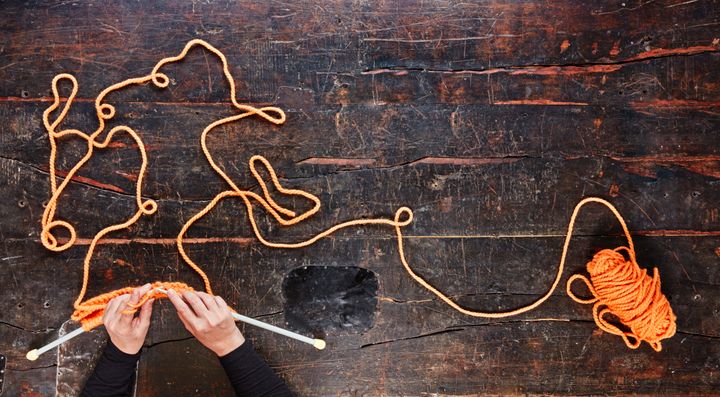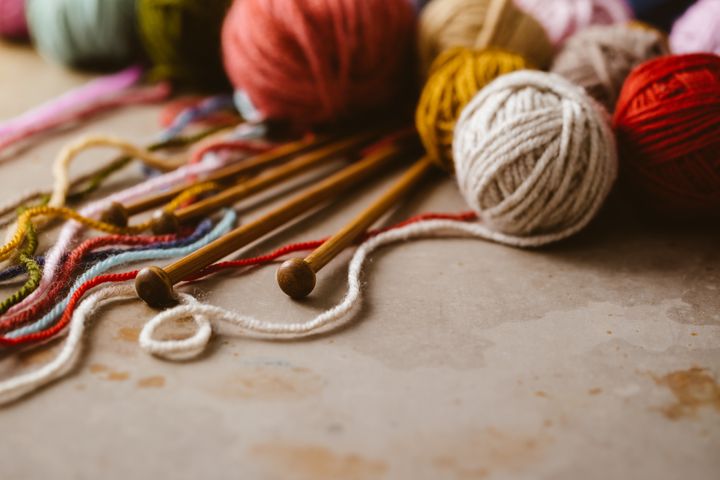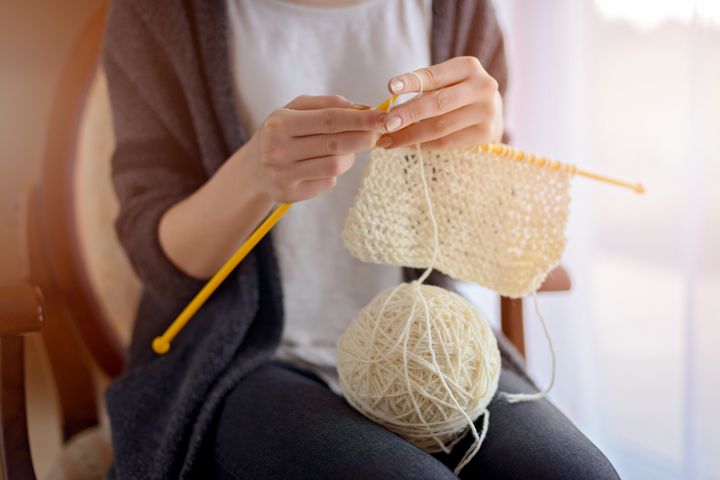
For years, it seemed to me that people who enjoyed knitting complicated garments using nothing but needles and wool must have the patience of saints. Though I admired the seemingly effortless ease of the talented knitters in my family, I never felt tempted to try it for myself.
My mother and aunts are expert knitters. Discussions about wool, needles and knitting patterns were an essential part of our childhood winters. Every November, as the temperature started dipping in Jaipur, where we lived, out would come the pony needles and balls of yarn, and they would settle down for a cosy chat as the needles clacked on.
I was happy to flaunt new sweaters and stylish caps, but never wanted to make them myself. Knitting lingo — k3, p1, s1 — sounded like chemistry. The funniest was ‘psso’ (pass slipped stitch over). The logic of casting on a stitch was incomprehensible to me.
But then, in Class 8, I was forced to undergo knitting lessons in school—our compulsory project was knitting a baby set with a tiny cardigan, cap and booties. As my teacher tried to complete her thankless task of explaining to unruly pre-teens how knitting actually worked, I was busy plotting how to run away, or failing that, getting my mother to change my school. Finally, after much coaxing and many tears, I agreed to knit. Buying the wool was a colourful experience. The delicate peach yarn looked lovely, but it couldn’t melt my heart.

In our first knitting class, we were taught how to cast stitches. While my classmates learnt fast, my stitches looked like independent electoral candidates whose unique identities made it impossible for them to work together. By the time I finally learned to cast stitches, most of my class had finished knitted the booties. When they finished the cap and began the baby cardigan, I had one half-knitted booty to boast of.
Winter had arrived and my class was halfway through their cardigans, when I finished the booties and the cap. Our submission was due in January and approaching exams meant I did not have much time to play with wool. Finally, my mother decided to knit the cardigan. She shared my dilemma with the teacher, who reluctantly accepted.
I passed by three marks, scoring 20 out of 50. But I was euphoric because I felt like I had conquered Mt Everest. I vowed never to touch knitting needles or admire the hues of wool again.
Then, 20 years after my questionable knitting triumph, I was beset by a crisis that felt like it would never end. Unable to cope, I suffered from chronic anxiety, which also led to panic attacks. As uncertainty loomed, I felt like the ground under my feet was disappearing. From being a hardcore optimist, I became a pessimist. When medication didn’t help, doctors advised yoga.
During one yoga session, as my mind danced along thinking chaotic thoughts, my yoga teacher suggested taking up a repetitive activity. That’s how I discovered that knitting and other repetitive activities could have calming effects. Though my history with knitting made me pause, I decided to give it a try.
I didn’t aim to create any tangible end-product—my only goal was to lessen my anxiety. Casting stitches, holding yarn and balancing needles to knit the so called ‘easy’ knit stitch still seemed horrendously complex. I dumped my first project. And then, as I stared, frustrated and tearful, at the uneven stitches, unyielding needles and curled yarn, it occured to me that if I wanted to make any sense of the yarn and the threads of life, I needed to loosen, disentangle and make the ‘holes’ whole.
A few days after that, somehow, I learnt to smoothly escort each stitch to the other side. Well, no, just to the other needle, helping it ease from one perilous edge to another. One marvellous day, I completed five rows and felt accomplished. But only for a second, until I discovered two holes where, despite my strict vigil, a few rebellious stitches had wandered off.

Exasperated, I decided to rework. I tried coaxing the stitches upwards, soon realising that it would require infinite patience and immense tenderness. Undoing was the simplest option and the goal-less pursuit made it easier.
Focusing on the stitches every day made my thoughts wait as I inadvertently discovered a way of keeping them away.
Gradually, my knotty relationship with knitting transformed into an understanding association of practicing mindfulness on the perilous edge of steel needles. My panic attacks and anxiety lessened as knitting helped me deal with my inner cacophony. I even managed to knit cardigans and caps for my daughter and nieces.
Knitting taught me that letting go doesn’t always result in a void, just as correctly slipped stitches don’t create holes but enhance the design. The only difference is, while knitting you follow an outline and in life you walk unknowingly through divine design that miraculously creates a pattern.
Today, I discuss and debate knitting patterns and process, with my mother who is happily surprised to watch me knit. That old reluctant knitter has now become an expert who loves picking up her needles often.